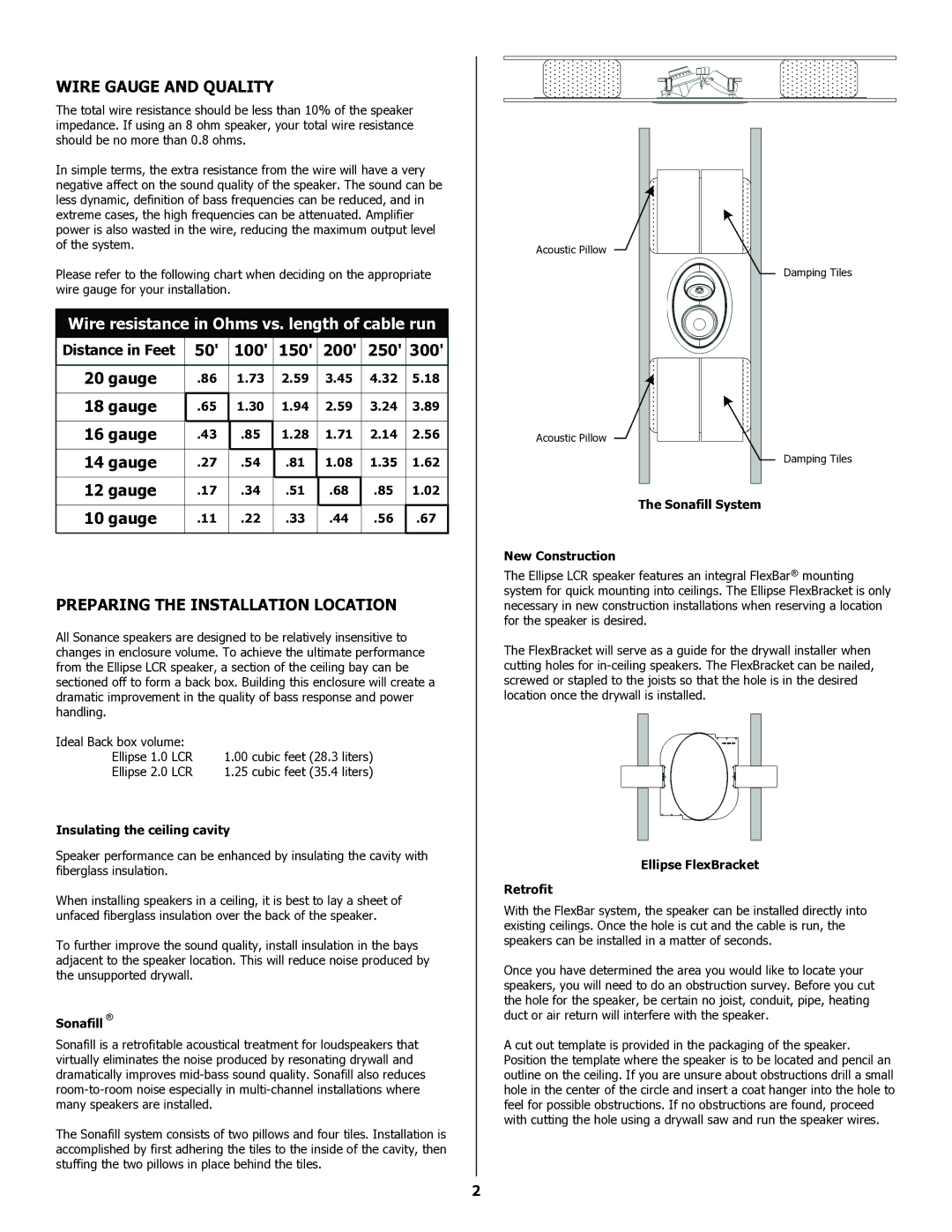91922 specifications
The Sonance 91922 represents a pinnacle of audio engineering, designed for high-performance custom installation in both residential and commercial environments. One of the standout features of the Sonance 91922 is its architectural design, allowing it to blend seamlessly into any space without compromising sound quality. It is part of the Sonance Visual Performance series, which focuses on delivering high-fidelity audio in a minimalistic form.One of the defining characteristics of the Sonance 91922 is its dual-driver configuration. This setup includes a 6.5-inch polypropylene cone woofer and a 1-inch silk dome tweeter. Together, these components ensure a wide frequency response that ranges from deep, resonant bass notes to crisp, detailed highs, making it suitable for various audio applications, from music playback to home theater systems. The incorporation of advanced materials in the drivers enhances durability and sonic performance, which is essential for long-term use.
The Sonance 91922 also features a unique Infinite Baffle design, which allows it to create a tight, controlled sound field, minimizing distortion while maximizing audio clarity. This helps in providing an immersive listening experience, whether you're enjoying a movie or hosting a gathering with friends. The speaker's enclosed design also aids in improved low-frequency response, allowing for better bass performance without the need for additional subwoofers in smaller setups.
In terms of installation, the Sonance 91922 is equipped with a robust mounting system that simplifies the process for contractors and DIY enthusiasts alike. The speaker is designed for in-ceiling or in-wall applications, and its low-profile design allows it to sit flush with the surface, maintaining the aesthetics of the environment. This versatility ensures that it can be installed in various configurations, accommodating different room layouts and sizes.
Overall, the Sonance 91922 stands out for its commitment to delivering superior sound quality while blending into the architectural fabric of spaces. With its advanced driver technology, Infinite Baffle design, and adaptable installation options, it serves as an excellent choice for those looking to enhance their audio experience without compromising on style or performance. Whether for casual listening or serious home theater applications, the Sonance 91922 is a worthy investment in high-quality audio solutions.

